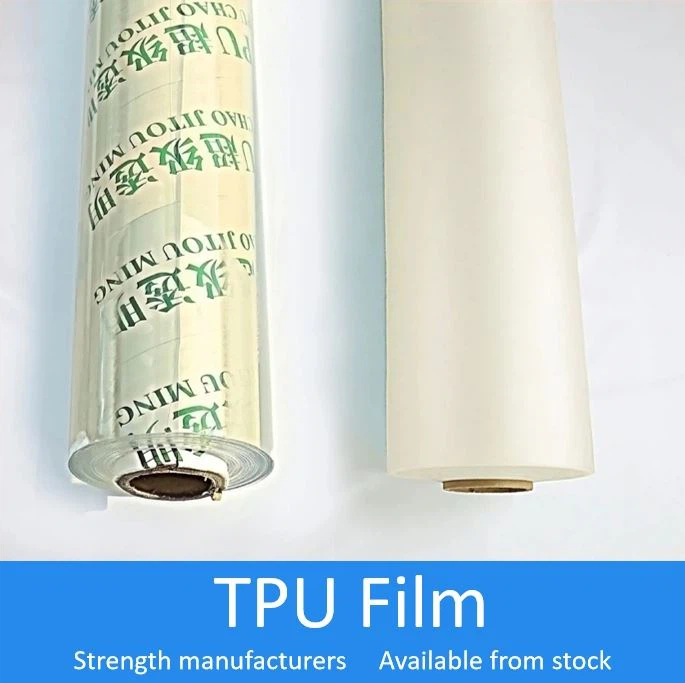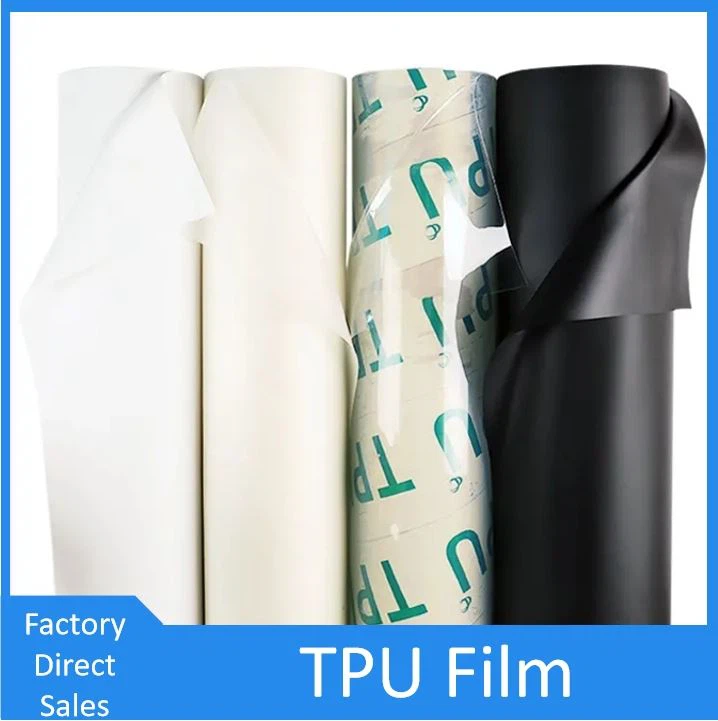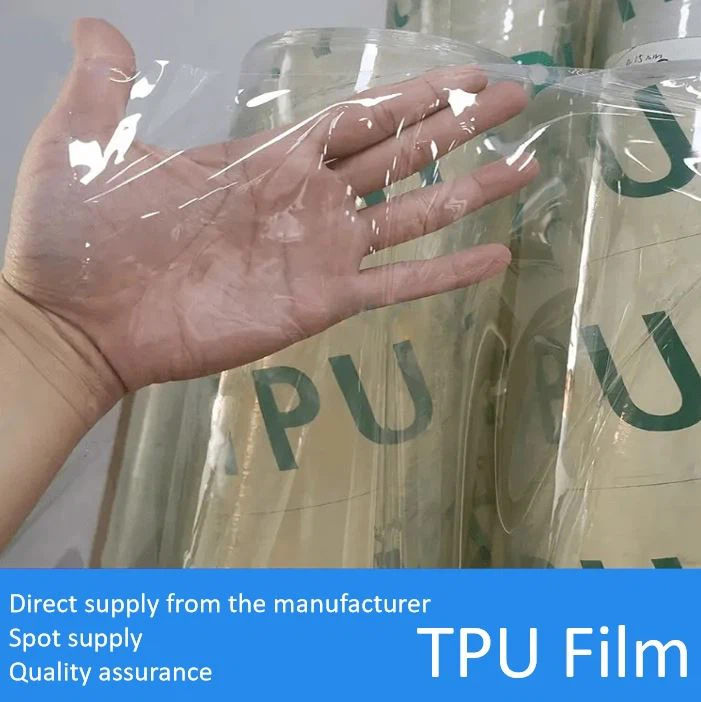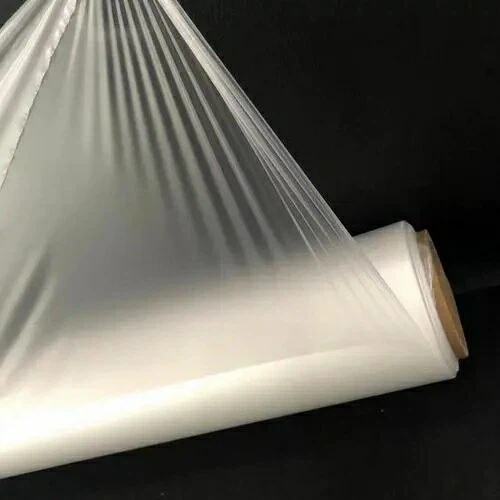As a supplier of TPU breathable film, I've encountered numerous inquiries regarding the most suitable adhesion methods for this remarkable material. TPU (Thermoplastic Polyurethane) breathable film is renowned for its unique combination of waterproofing and breathability, making it a popular choice in various industries such as bedding, sportswear, and medical applications. In this blog, I'll delve into the different adhesion methods for TPU breathable film, highlighting their advantages, limitations, and ideal use - cases.
1. Heat Sealing
Heat sealing is one of the most common and effective adhesion methods for TPU breathable film. This process involves applying heat and pressure to two layers of TPU film or between the TPU film and another compatible material. When heated, the TPU material softens and fuses together, creating a strong and durable bond.

Advantages: - High Strength Bond: Heat - sealed joints can withstand significant stress, making them suitable for applications where the bond needs to be robust, such as in waterproof outdoor gear. - Waterproof Integrity: Since the TPU material is melted and fused, the seal is completely waterproof, preventing any water penetration through the bonded area. - Fast and Efficient: Heat sealing can be automated, allowing for high - volume production with relatively short cycle times.
Limitations: - Equipment Requirements: Specialized heat - sealing equipment is necessary, which can be expensive to purchase and maintain. - Material Compatibility: Heat sealing requires the materials being bonded to have similar melting points. If the materials have very different melting characteristics, achieving a good bond can be challenging.
Ideal Use - Cases: - Sportswear: Heat - sealed seams in sportswear ensure that the clothing remains waterproof and breathable during intense physical activities. - Outdoor Tents: Heat - sealed TPU film joints provide a reliable waterproof barrier for tents, protecting campers from the elements.
2. Adhesive Bonding
Adhesive bonding involves using a suitable adhesive to join the TPU breathable film to another material. There are different types of adhesives available, including solvent - based, water - based, and hot - melt adhesives.
Advantages: - Versatility: Adhesive bonding can be used to join TPU film to a wide range of materials, including fabrics, plastics, and metals, regardless of their melting points. - Low Equipment Cost: Compared to heat - sealing equipment, the equipment required for adhesive bonding is generally less expensive. - Flexibility: Adhesives can provide a flexible bond, which is beneficial in applications where the bonded parts need to bend or stretch, such as in medical bandages.
Limitations: - Curing Time: Adhesives usually require a certain amount of time to cure, which can slow down the production process. - Environmental Impact: Some solvent - based adhesives can release volatile organic compounds (VOCs), which are harmful to the environment and human health.
Ideal Use - Cases: - Medical Applications: Adhesive - bonded TPU breathable film is used in medical dressings and bandages because it can be easily attached to the skin and other medical fabrics. - Automotive Interior: Adhesives are used to bond TPU film to automotive interior components, providing a waterproof and breathable layer.
3. Ultrasonic Welding
Ultrasonic welding is a process that uses high - frequency ultrasonic vibrations to generate heat at the joint between two materials. This heat causes the TPU material to melt and bond together.
Advantages: - Fast and Clean: Ultrasonic welding is a rapid process that produces clean and precise bonds without the need for additional adhesives. - No Chemicals: Since no adhesives are used, there are no concerns about chemical residues or VOC emissions. - High - Quality Bond: The bonds created by ultrasonic welding are strong and have good mechanical properties.
Limitations: - Limited Thickness: Ultrasonic welding is more suitable for thinner TPU films. Bonding thicker films may require more power and specialized equipment. - Joint Design: The joint design needs to be carefully considered to ensure effective ultrasonic energy transfer and a good bond.

Ideal Use - Cases: - Electronics Packaging: Ultrasonic - welded TPU breathable film can be used to protect electronic components from moisture while allowing air to pass through. - Footwear: Ultrasonic welding is used to bond TPU film to shoe uppers, providing a waterproof and breathable layer.
4. RF (Radio Frequency) Welding
RF welding uses radio frequency energy to heat and bond TPU materials. The RF energy causes the polar molecules in the TPU to vibrate, generating heat and melting the material at the joint.
Advantages: - Precise Control: RF welding allows for precise control of the welding process, resulting in consistent and high - quality bonds. - Good Sealing Performance: The bonds created by RF welding are waterproof and airtight, making them suitable for applications where a high - level of sealing is required. - Fast Production: Similar to heat sealing, RF welding can be automated for high - volume production.
Limitations: - Equipment Cost: RF welding equipment is relatively expensive and requires professional installation and maintenance. - Material Sensitivity: The effectiveness of RF welding depends on the material's electrical properties. Some materials may not be suitable for RF welding.
Ideal Use - Cases: - Inflatable Products: RF - welded TPU film is commonly used in inflatable boats, air mattresses, and other inflatable products to ensure a leak - proof seal. - Industrial Covers: RF - welded TPU film can be used to make industrial covers that need to be waterproof and breathable.
Choosing the Right Adhesion Method for Your Application
When selecting the appropriate adhesion method for TPU breathable film, several factors need to be considered:

- Material Compatibility: Ensure that the adhesion method is compatible with the materials you are bonding. For example, if you are bonding TPU film to a fabric, adhesive bonding may be a better choice than heat sealing.
- Bond Strength Requirements: Consider the amount of stress the bond will need to withstand. For high - stress applications, heat sealing or ultrasonic welding may be more suitable.
- Production Volume: If you are producing a large number of products, methods that can be automated, such as heat sealing, RF welding, or ultrasonic welding, may be more cost - effective.
- Environmental Considerations: If environmental impact is a concern, choose adhesives that are low in VOCs or consider non - adhesive methods like heat sealing or ultrasonic welding.
As a TPU breathable film supplier, we offer a wide range of products, including Waterproof TPU Film for Bed Cover, Medium - high Breathable TPU Film, and Medium - high Breathable Waterproof TPU Film. Our films are suitable for various adhesion methods, and we can provide technical support to help you choose the best method for your specific application.

If you are interested in our TPU breathable films or have any questions about adhesion methods, please feel free to contact us for further discussion and potential procurement. We look forward to working with you to meet your needs.
References
- "Thermoplastic Polyurethane (TPU) Handbook" by Michael Szycher
- "Adhesive Bonding: Science, Technology, and Applications" by David A. Dillard
- "Ultrasonic Welding of Plastics and Non - Metallic Materials" by J. D. Bates
